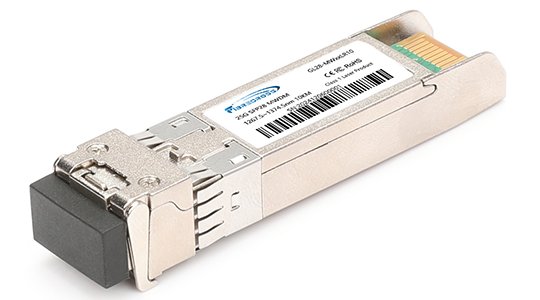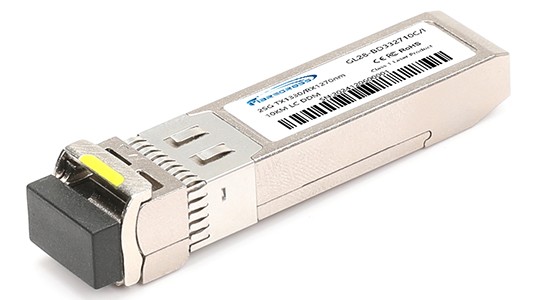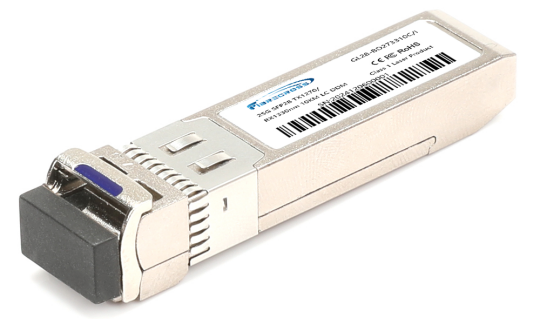An In-depth Guide to 25G SFP28 Optical Transceiver Modules
In today’s hyperscale data centers, enterprise networks, and telecom infrastructures, demand for higher bandwidth and lower latency is skyrocketing. At the heart of this evolution lies the 25G optical transceiver, a compact, cost‑effective solution designed to deliver 25 Gbps per lane over a variety of distances. Particularly, the 25G SFP28 optical transceiver module has become the industry standard for server-to-switch connectivity, leaf-spine architectures, and high‑performance computing (HPC) environments.
This article will cover:
What is a 25G optical transceiver?
Key features of 25G SFP28 optical transceiver modules
Technical specifications and performance
Applications and deployment scenarios
How to choose the right 25G optical transceiver
What Is a 25G Optical Transceiver?
An optical transceiver is an integrated device that both transmits and receives data via optical fiber. In the case of a 25G optical transceiver, each lane supports 25 Gbps, enhancing aggregate bandwidth without increasing port density or rack space. The SFP28 form factor—a slight evolution of the SFP+ footprint—allows seamless migration in existing switch and server platforms designed for SFP+ cages.
Why 25G?
Future‑proof bandwidth: Supports evolving protocols like 25G Ethernet, 32G Fibre Channel, and beyond.
Cost efficiency: Offers a better price‑per‑gigabit than jumping directly to 40G or 100G solutions.
Simplicity: One lane at 25 Gbps is easier to tune than parallel‑lane higher‑rate optics.
Key Features of 25G SFP28 Optical Transceiver Modules
When evaluating a 25G SFP28 optical transceiver module, look for these essential characteristics:
Form Factor & Compatibility
Standard SFP28 footprint (compatible with SFP+ cages)
Hot‑pluggable design for minimal network downtime
Link Length & Fiber Type
SR (Short Reach): Multimode fiber, up to 100 m on OM4
LR (Long Reach): Single-mode fiber, up to 10 km
ER/ZR: Extended reach to 40 km/80 km
Power Consumption
Typical <1 W per module, optimizing rack‑scale power budgets
Optical Interface
Duplex LC connectors for single‑fiber transmit and receive
Data Protocols Supported
25G Ethernet (IEEE 802.3by)
32G/16G/8G Fibre Channel (optional backward compatibility)
Diagnostics & Monitoring
Digital Optical Monitoring (DOM) for real‑time status of TX/RX power, temperature, and voltage
Technical Specifications & Performance
Below is an example specification table for a generic 25G SFP28 optical transceiver module:
| Specification | SR (OM4) | LR (SMF) |
|---|---|---|
| Wavelength | 850 nm | 1310 nm |
| Maximum Link Distance | 100 m (OM4) | 10 km |
| Data Rate | 25.78125 Gbps | 25.78125 Gbps |
| Form Factor | SFP28 | SFP28 |
| Transmit Power (dBm) | –6.5 to –1.0 | 0 to +5 |
| Receiver Sensitivity (dBm) | ≤ –10.3 | ≤ –11.3 |
| Power Consumption | < 1 W | < 1 W |
| Connector | Duplex LC | Duplex LC |
| Monitoring | DOM (SFF‑8472 compliant) | DOM (SFF‑8472 compliant) |
These modules undergo rigorous testing to ensure low bit error rates (<10⁻¹²) and robust performance across temperature and voltage ranges.
Applications & Deployment Scenarios
1. Server‑to‑Top‑of‑Rack (ToR) Connectivity
In modern leaf‑spine architectures, servers connect to access (leaf) switches using 25G SFP28 optical transceivers, balancing high bandwidth with port density.
2. High‑Performance Computing (HPC)
HPC clusters rely on ultralow‑latency links. The single‑lane 25G SFP28 module keeps latency minimal compared to parallel‑lane optics.
3. Storage Area Networks (SAN)
25G Fibre Channel over Ethernet (FCoE) allows unified storage and network convergence, reducing cabling complexity.
4. Telecom & 5G Fronthaul
Small cells and workgroup switches in 5G networks benefit from the compact size and high speed of 25G optical transceivers.
5. Edge & Industrial Applications
For distributed compute at the edge—whether in retail, manufacturing, or transportation—robust 25G modules withstand variable environmental conditions.
How to Choose the Right 25G Optical Transceiver
When selecting your 25G optical transceiver, consider the following:
Compatibility & Vendor Support
Ensure compatibility with your switch or server vendor (e.g., Cisco, Juniper, Arista).
Look for “plug‑and‑play” compatibility lists or firmware verification.
Distance Requirements
Choose SR, LR, ER, or ZR based on your link‑length needs.
Fiber Infrastructure
Verify the existing fiber type (OM3/OM4 multimode vs. OS2 single‑mode).
Consider future upgrades (e.g., migrating from OM3 to OM4).
Power & Cooling Budgets
Tally total port‑powered optics per rack; low‑power modules translate to less cooling and lower OPEX.
Monitoring & Diagnostics
DOM capability allows proactive maintenance—critical for B2B service‑level agreements (SLAs).
Cost vs. Performance
Balance upfront module cost against expected operational life and replacement cycles.
Consider aftermarket or third‑party options versus OEM for budget flexibility.
Conclusion & Call to Action
The 25G optical transceiver, particularly the 25G SFP28 optical transceiver module, represents a versatile, future‑ready solution for scaling bandwidth in data centers, enterprise networks, and beyond. By carefully selecting modules that match your fiber infrastructure, distance needs, and power budgets, you can optimize network performance and total cost of ownership.
Ready to upgrade your network to 25 Gbps? Explore our full lineup of 25G optical transceivers—including SR, LR, and extended‑reach variants—and request a sample today to experience seamless integration and unwavering reliability.
Frequently Asked Questions (FAQs)
SFP28 shares the same physical form factor as SFP+ but supports 25 Gbps per lane versus 10 Gbps in SFP+. It provides a straightforward upgrade path without changing port density.
No. Transceivers must match the port’s speed. A 25G SFP28 module will not operate in a legacy 10G SFP+ port.
Fiber type (multimode vs. single‑mode), fiber quality (OM3 vs. OM4), and connector cleanliness all influence link distance.
Reputable third‑party manufacturers offer modules with performance and warranty on par with OEM optics—often at lower cost. Verify interoperability and DOM compliance.






